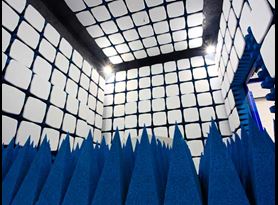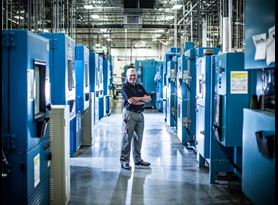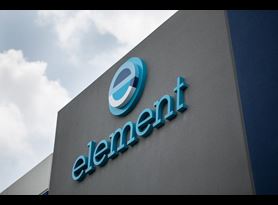SAE J1455 Testing Considerations
SAE J1455 is the “go-to” test specification for products associated with the automotive market. It is a good fit for developing a test plan for both on and off-road vehicles as well as heavy-duty trucks.
When you consider that 40% to 60% of today’s automobiles are made up of electronic parts, SAE J1455 is a valuable resource to insure reliable performance. Element is accredited to perform SAE J1455.
SAE J1455 should be regarded as a design guideline
The specification is based on test results from major North American truck manufacturers and component suppliers. The tests called out in SAE J1455 should not replace actual operating specifications.
SAE J1455 considerations
Customers interested in developing a test plan based on SAE J1455 will still need to determine:
Number of cycles
Know that ultimately the test will be a short duration of environmental exposure. Consider the location and function of the product and remember the number of cycles should not represent an accelerated test in order to try and determine reliability/durability. That is a different test all together. Consider HALT/HASS testing to establish operating limits and reliability data.
Pass/fail criteria
This should be determined before testing begins. It sounds simple enough, but if pass/fail is not identified, it can lead to additional time and expense in testing with questionable results. Identifying pass/fail is especially important if you are outsourcing testing to an independent lab like Element, and will not witness testing. Clear inspection instructions to the test technicians are needed so they can be noted in the test data.
Sample Size
How many samples are necessary to draw reasonable conclusions about how the product will behave under test? An independent test lab will also want to know this information to help determine which test equipment to utilize for the test.
Sequence of Testing
In general, SAE recommends placing the most severe environmental testing last (ie. shock & vibration). Temperature cycling is often performed first to condition the test article to function mechanically.
Combining Tests
It’s true that many of the environmental conditions called out in SAE J1455 occur simultaneously in real-world conditions. Often, the combined exposure may have more severe/important results than exposing the part to one condition at a time. SAE sites two very relevant examples here:
- Temperature and vibration – will the product's design and mounting location be susceptible to the simultaneous combined exposure of both temp and vibration?
- Humidity with both high and low temp exposure – This combination can be very important as it relates to the sealing integrity of electrical components under test. Humidity is water. It will condensate at high temps, possibly penetrating seals. At low temps, water can freeze inside the component if the seal has failed.
What J1455 tests should I perform?
SAE has identified 13 environments that will likely have an impact on components installed on a vehicle.
Remember to consider combining humidity with hi-low temps and temperature with vibration when deciding which tests to choose. For each of these conditions below, SAE J1455 gives: (A) Definition of the Environment, (B) The Environments Effect on Performance, (C) Recommended Test Methods.
- Temperature (Includes Thermal Shock)
- Humidity - There are two recommended humidity cycles. One is an 8-hour temp/humidity cycle and the second is a temp/humidity cycle under pressure to uncover defects in plastic encapsulated semiconductors.
- Salt Spray (SAE recommends ASTM B117)
- Immersion/Splash of water, chemicals oils
- Steam cleaning/pressure washing
- Fungus
- Dust/Sand and Gravel Bombardment
- Altitude
- Vibration
- Shock
- General Electrical Environment
- Steady State Electrical
- Transient/Noise/Electrostatic
- Electromagnetic compatibility (EMC)
- Electromagnetic interference (EMI)
Location, location, location
Refer to Section 5 of the spec to determine the location of the vehicle the component will be installed. This helps refine the tests to select. There are further location sub-categories, but here are the basics:
- Underhood
- Interior Cab
- Interior Aft of Cab
- Chassis
- Exterior of Cab
For example, the temperature minimum and max extremes for a thermal shock test vary based on the location of the component on the vehicle. SAE J1455 contains a table outlining those temperature extremes. Minimum temperatures are -40C to maximum temps of +307C based on the location of the component.
What is the cost of SAE J1455 testing?
It depends. Sample size, number of cycles, and combining environmental conditions all play a factor in the cost of the test. Asking for the test data rather than a formal report will result in cost savings.
Element can help advise on how long the individual test profiles in SAE J1455 take and will work with you to determine the most efficient and cost-effective scheduling possible.
To learn more about SAE J1455, or if you have any questions, contact our team today.
Find related Resources
More from Element

Dynamics Testing
In addition to vibration testing, Element provides a range of dynamics testing including acceleration, shock, drop, structural, fatigue and rotating load simulations.

EMC Testing Services
We provide accredited EMC testing services, helping you to meet regulatory requirements, and improve the performance and safety of products and devices through our global laboratories.

Environmental Testing
Element can provide you with critically important data on your product or part's performance in response to typical or extreme environmental stresses and conditions.

Local laboratories, global platform
Doing business with one of our laboratories enables our clients' access to our global platform of expertise, capacity and capabilities.

